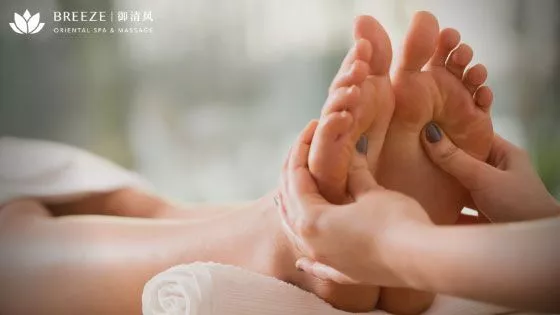Reflexology is frequently mixed up with a massage. Of course, this confusion is quite understandable when we consider that how the two are being performed appears indistinguishable. However, no matter how similar these two things seem to be, there are still a few differences between them such as their execution, the body parts that are involved, and their very own principles. In the following paragraphs in this article, we will get ourselves familiar with reflexology, how it works, its benefits, and why we ought to make the most of it.
The Definition of Reflexology
Reflexology is a form of therapy exercised as a remedy in alternative medicine since the old ages that involve the use of the right amount of pressure to precise points and areas in our body especially on the feet, hands, and/or ears. Reflexologists believe that each of these reflex spots corresponds to the various organs and systems of our body and that applying pressure to it could create substantial benefits on our health not only on the physical but on the mental aspect as well.
Where it Started?
There have been references about working around the feet, hands, and ears in several cultures all throughout our history, yet, we do not know for certain if the early art as practiced by these civilizations and reflexology as we know it now shares the exact same method. In accordance with antiquated Chinese documents, Buddhist monks brought early reflexology from India to China at roughly 5000 years back. There are numerous ancient Chinese publications that talk about techniques that are much like today’s contemporary reflexology and the information in these publications is still used by Traditional Chinese Medicine Practitioners all around the globe up to this day. On the other part of the world about 4000 years back, an ancient tomb occupied by a King’s Doctor was discovered at Saqqara, Egypt and a number of its drawings portray something that appears to be exactly what we now term as a reflexology session.
How Modern Reflexology Evolved Through Time?
Throughout the 1920s, Dr. William Fitzgerald, an EENT surgeon, experimented with a theory. He observed zones that run up and down our entire body and later on understood that with the constant application of pressure to a particular area on our fingers and toes, we are able to make a completely different area of our entire body go numb. This technique was called Zone Therapy and it has come to be the start of reflexology in the western part of the globe. About a decade later (in the late 1930s), Dr. Fitzgerald worked together with Eunice Ingham to further his discoveries. The latter then discovered that a particular area within our body is able to heal faster by applying constant pressure to parts of our foot and hands. These discoveries were documented and studied all throughout the years which led us to what we now call Reflexology.
The Difference Between Reflexology and Massage
Reflexology, acupuncture, and massage are almost always used to ease our body pains and manage the symptoms of stress, depression, and anxiety; because of this, a lot of us thought reflexology is a kind of massage. Of course, it is easy to determine the difference between massage and reflexology from acupuncture because of the fact that acupuncture uses needles for its sessions whilst the two don’t. However, in reflexology and massage’s case, they look really the same when performed as there is really not much distinction at first. The only few noticeable differences between the two are as follows: massage therapists handle larger areas of soft tissue in our whole body while reflexologists apply pressure to small specific points on the feet, hands, and ears. Aside from the size of the area involved, another thing to note is the number of parts of the body that can be handled by massage therapists compared to reflexologists. A massage can be applied all throughout the body while reflex is focused on ears, hands, and feet.
How Does it Work and What are the Benefits of Reflexology?
Reflexologists believe that our feet and hands are smaller representations of our whole body and they follow a certain map to make sure that the points where pressure is being put on are accurate. These are the most well known benefits that we can obtain by getting a reflexology session:
- Same with a massage, reflexology can cause a state of calmness all through our entire body and mind. For this very reason, reflexology may also be employed to help in treating sleep problems like insomnia and support our body to return to its normal and healthy state.
- IMPROVEMENT OF YOUR NERVE FUNCTIONS AND BRAIN POWER. Reflexology can open up and clean out our neural pathways to better functionality and flexibility of our nerves and cells in the body. By doing so, the information will be able to flow much faster to our brain. If this happens, the brain would be able to handle and process information faster too which results in much faster cognitive and physical reactions and a boost in our memory.
- INCREASED BLOOD CIRCULATION AND ELIMINATE TOXINS IN THE BODY. Improving our blood circulation indicates that more oxygen can reach our vital organ and systems that would then improve its performance, increase our metabolism, promote faster healing and damaged cells re-growth. Additionally, it also improves bladder function, lessening the possibility of urinary tract problems and a more efficient system to better eliminate toxins in our body.
There are many other benefits that can be acquired through a regular reflexology session. If you would like to experience it for yourself, you can find the best reflexology in BGC, Taguig, Metro Manila in Breeze Oriental Spa and Massage. Paying a visit to this spa and trying out their services will surely be worth it.

